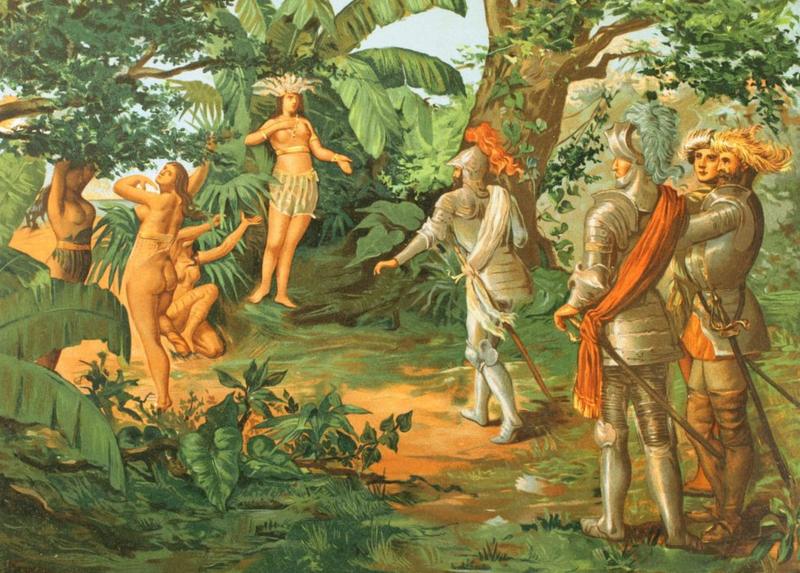When Christopher Columbus first set foot on the island of Hispaniola in 1492, he began a new chapter in history that would forever alter the course these coasts. The Spanish explorers were drawn to the island’s lush landscapes and abundant resources. La Isabela became the earliest permanent settlement established by the colonizers on the island of Hispañola. This after their first improviced settlement what today is Haiti was burned to the ground by the Taíno natives in a series of events that finally led to the death of the regional chief Anacaona.
The Taíno who not at all happy by the savage behaviour of the Spanish in particular various incidents involving abuse of their women. Led by their thirst for wealth and a desire to expand their empire, the Spanish set in motion a series of events that would shape the destiny of the region and unleash am extremely cruel genocide on the Taíno population causing the need for bringing slaves from Africa to work the land.
Columbus never connected the dots

Even though Columbus made several trips across the Atlantic from Spain the Americas he died still thinking he had found the route to India. He never realized it was a new continent. It was the italian explorer and navigator Amerigo Vespucio that was the first European to make this “discovery” and this is why this continent today holds his name, America from Amerigo.
Establishing the Spanish Presence
As the Spanish presence grew in the New World, La Isabela became an important outpost for their colonization efforts. The peninsula’s strategic location along the coast provided easy access to the surrounding seas and served as a base for expeditions and trade. The Spanish established forts and garrisons to protect their interests and maintain control over the region. These structures not only provided defence but also served as symbols of Spanish power and authority.
The Influence of Spanish Culture
With the establishment of the Spanish settlement in La Isabel, the cultural landscape of the region was forever changed. The Spanish brought their language, customs, and traditions, which fused with the indigenous Taíno culture, creating a unique blend that still resonates in the Dominican Republic today. Spanish architecture left its mark on the town, with colonial-style buildings and structures dotting the landscape. The influence of Spanish cuisine, music, and religion also became deeply ingrained in the local way of life.
The Impact on Indigenous Communities
As the Spanish settlement expanded, the indigenous Taíno population faced significant challenges and upheaval. The arrival of the colonizers brought diseases to which the Taíno had no immunity, resulting in devastating consequences for their communities. Forced labor and exploitation further eroded the Taíno way of life, leading to the decline of their population and cultural practices. The Spanish conquest reshaped the social fabric of La Isabela and the region of Cibao, leaving a lasting impact on the indigenous communities that once called the region their home.
Legacy and Reflection
Today, the historical significance of the original Spanish settlement in La Isabela is commemorated and preserved. Visitors can explore remnants of the past, such as the forts and archaeological sites that bear witness to the colonial era. Museums and cultural centers showcase artifacts and exhibits that tell the story of this pivotal time in history. It is through these efforts that we can reflect on the complex legacy of the Spanish settlement, appreciating the contributions and acknowledging the hardships experienced by both the colonizers and the indigenous peoples.
As we delve into the history of the original Spanish settlement in Punta Rucia, we are reminded of the transformative power of exploration, colonization, and cultural exchange. This chapter in history serves as a reminder of the complex and intertwined narratives that have shaped the Dominican Republic and highlights the importance of understanding and preserving our collective heritage.


